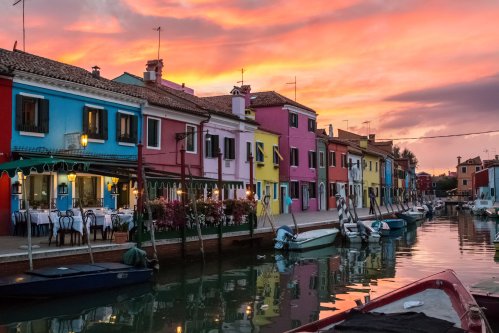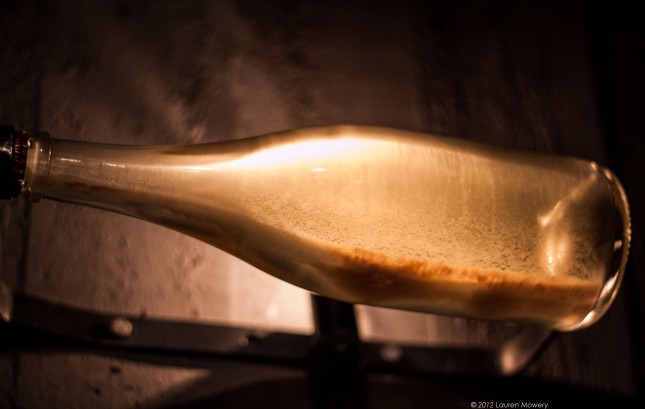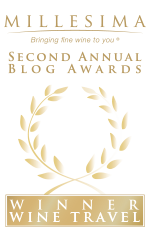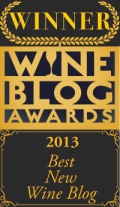
Traversing Tuscany’s rolling hills, each prettier than the last, feels like a ride on a magic carpet, while around you, the breathtaking landscape forms a living watercolor. Stone farmhouses and once-noble castles with crenelated towers, now converted into hotels and wineries, sit perched upon each mound. Allées of slender Cypress trees hug the winding drives to the top. In Tuscany’s southeast corner lies the medieval town of Montepulciano, beckoning with its dazzling Renaissance palaces, glorious churches, fine red wine and local restaurants serving regional fare like bistecca Fiorentina. But you needn’t travel halfway around the world to appreciate Montepulciano’s vinous virtues, nor its partner cuisine, now that the great food and wine traditions of this corner of Italy can be enjoyed at home.
The adage “what grows together, goes together” applies in Montepulciano. Reigning as one of the top three places in the world for Sangiovese, the area’s famous wine, Vino Nobile di Montepulciano, is perfect for pairing with all manner of foods. The well-balanced, medium body delivers supple red fruit, moderate alcohol, and juicy acidity, and works with everything from antipasto to soups to tomato-based sauces over pasta; velvety tannins cut the luscious fat of a steak or cinghiale ragu.

The origins of modern Tuscan food stem back to its peasant roots, known as cucina povera or “poor cooking.” Cucina povera was born from economic circumstance – the need to make large, hearty, and inexpensive portions from simple ingredients found in the countryside. Spice blends and complicated techniques weren’t used because they weren’t needed when working with fresh, hyper-local products. The only difference today is that adherence to this culinary legacy is a choice. With access to a reliable butcher and good ingredients, Tuscan cuisine can be recreated easily by the home cook.
To replicate the Tuscan experience at home, be sure to preface the meal with a spread of antipasto. The affettatti misti, a platter of cured sliced meats called salumi, typically includes pork – prosciutto, finocchiona — and beef like bresaola. As accompaniment, a selection of cheeses, preferably Pecorino Toscano (which has a DOP), may be served in shades of maturation. Chicken liver pate with toasted bread — crostini di fegato — and delicately fried, tempura-like vegetables such as zucchini and its flowers, round out the selection. With a slight chill, a youthful Vino Nobile, fresh and fruity, drinks nicely with these foods.
Soups play an important role in Tuscan cooking, especially since they use up leftover or excess produce and bread. From ribollita, a vegetable version typically comprised of black kale, cannellini beans and a stale loaf, to Pappa al Pomodoro,prepared with tomatoes, bread, garlic, olive oil, and basil. The surprisingly rich unctuousness of this simple tomato soup pairs brilliantly with the bright acidity and cherry notes of Vino Nobile.
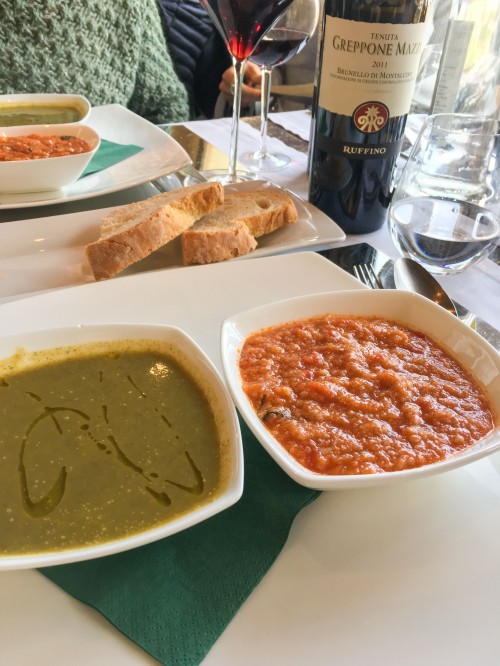
Of course, what distinguishes Italian cuisine from the rest of the world is its pasta. Every region boasts cherished recipes, and Tuscany is no different. Pici, for example, is a simple Tuscan pasta that’s easy to make at home. Created by the Sienese pastaii, or pasta makers, pici is an eggless recipe. Based off a simple dough of flour and water, its thick strands are hand-rolled and cut into strips. Cooked al dente, a range of sauces adhere to the pasta, from simple tomato to meat ragu.
For meat lovers, Tuscany conjures visions of bistecca alla Fiorentina. The rotund cattle of Montepulciano’s Val di Chiana, known as Chianina, are the source of this flavorful T-bone. Typically charred on the exterior, and cooked a shade above rare inside, an older Vino Nobile from a winery’s best vines delivers one of the world’s best culinary pairings. Steak isn’t the only meat on the menu in Tuscany. Roasted game, especially cinghiale (wild boar) and hare, abound, either as a sauce for pasta or as the main course, il secondo, itself.
If you can’t get to Montepulciano, try bringing the food and wine of the region into your home. It’s the next best thing to being there, and doesn’t require a long-distance flight.





